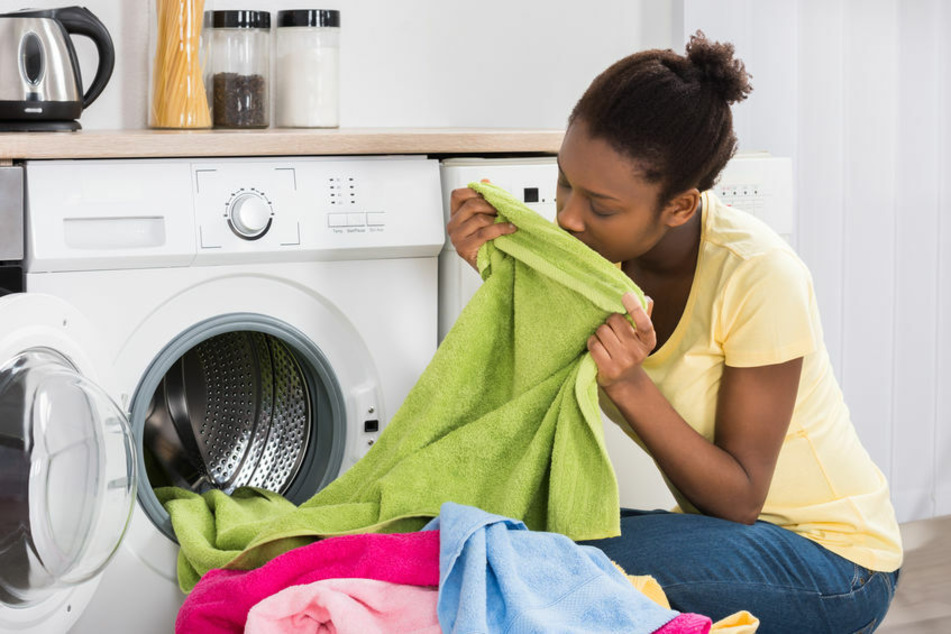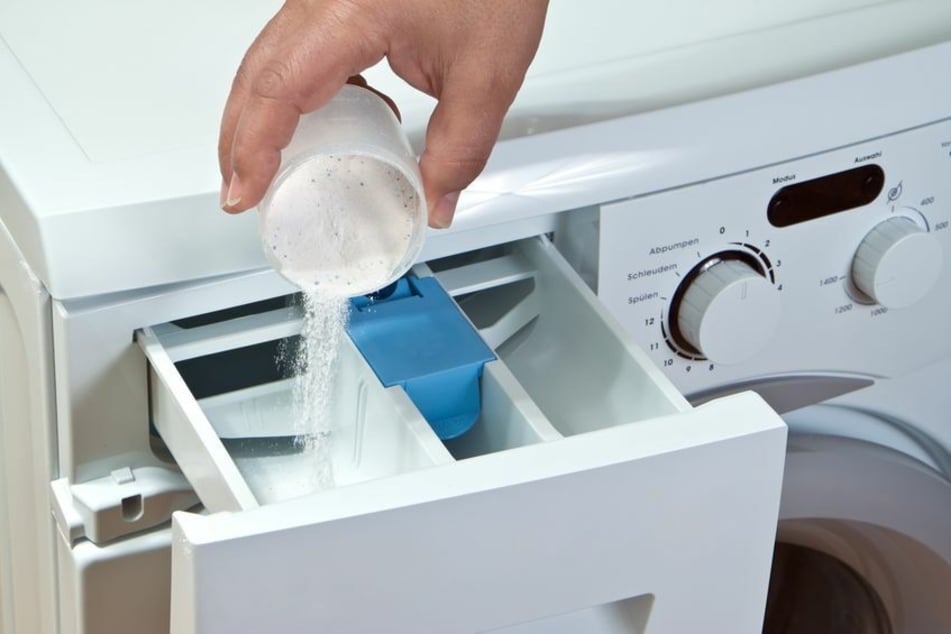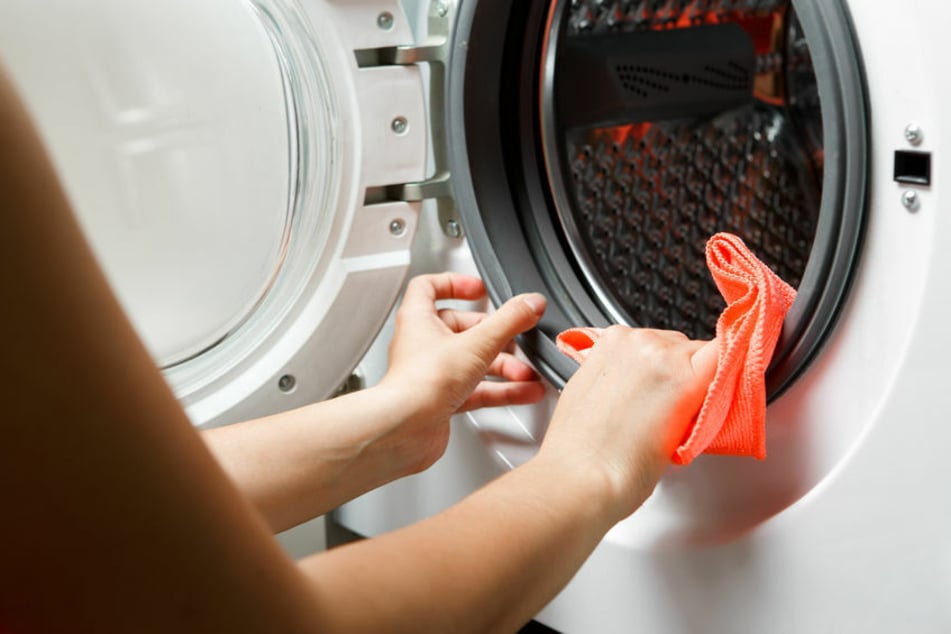Four crucial steps to giving your washing machine a deep clean
Mold, limescale, and dirt can make washing machines work harder than they should and can also affect their function, so regular cleaning is very important.

If your freshly washed clothes smell bad, it may be time for a thorough washing machine cleaning, which should be done about every four months, depending on water hardness.
If you want to clean your washing machine, you shouldn't skip any of these important steps, otherwise stubborn deposits of limescale, grease, and other dirt can hang behind and mold could form.
This leads to dirty laundry with streak, as well as calcium build up on parts of the machine which will impair its function.
TAG24's guide to cleaning your washing machine will take you through the four most important points to keep in mind.
1. Clean the detergent compartment

First, pull out the detergent drawer completely. Look for push tabs and be careful not to snap the hinges.
It is best to put the drawer in a mild, lukewarm soapy water for about 10 minutes to loosen the dirt. Then clean and wipe it with a sponge and a toothbrush that can get into the smallest corners. Finally, simply give it a good rinse off.
The drawer should also be cleaned from the inside with a sponge and mild soapy water. You can do this step while the drawer is soaking.
Once everything is cleaned, simply slide the drawer back in.
Important to note: The drawer should never be completely closed, especially after washing, to allow residual moisture to escape and prevent mold from forming.
2. Check and clean the pump filter
The pump filter, which is located at the bottom of the machine, also needs to be checked. The washing machine's user manual should indicate the exact location of the filter on your particular model. If very small items get caught in the pump filter, the machine might no longer pump properly. In addition, deposits can also lead to unpleasant odors.
To check the pump filter, proceed as follows:
- Place a towel along the edge of the washing machine.
- Place a flat dish (tip: a flat baking tray) in front of it to catch the escaping water.
- Open the flap.
- Pull out the drain hose a little, open it slowly and let the remaining water run out.
- Open the pump filter (be careful, water can still leak out there too!) and check whether there are any objects that have been washed inadvertently.
- Clean the pump filter and the tunnel, reassemble everything - and you're done!
3. Clean the gasket of the washing machine

The gasket, which is the rubber sealing ring at the entrance to the drum, is subjected to all kinds of dirt, so it should be wiped regularly. It's best to do it at least once a month, otherwise gray sludge will form and dirt left long term won't be easily removable.
To do this, take a wet cloth and mild soapy water, gently fold open the sealing lip and wipe along under the cuff. You should never use acids such as vinegar when cleaning this part, as it can corrode the rubber and make it porous.
If you wipe the gasket regularly, this will never take long.
4. Clean the drum of the washing machine
Now it's time for the heart of the machine: the washing drum. Since you can't reach the container that surrounds the drum, you have to run a washing program with a cleaning and care product. There are various options here, from professional cleaners to old household remedies.
Better Homes and Gardens advises using simple baking soda and vinegar because removes mold and germs without damaging your machine or clothes.
A deep clean for your washing machine:
- Run an empty, hot cycle, using two cups of white vinegar in the detergent dispenser and no detergent.
- Mix 1/4 cup vinegar with a quart of warm water, and scrub the inside and outside the machine.
- Run a second hot cycle, adding 1/2 cup baking soda to the drum (no detergent or vinegar this time).
- Wipe out any remaining residue after the cycle with a microfiber cloth.
Tip: Use little or no fabric softener!
Fabric softener is not very environmentally friendly and contains lanolin (wool grease), which forms deposits in the washing machine.
Important to note: Just like the drawer, you should always leave the door to the washing machine open when not in use, otherwise residual moisture will form mold.
You might also be interested in this:
The TikTok Queen of Clean helps out an elderly couple and completely transforms their home!
- House Cleaners had to catch their breath after walking into an incredibly filthy home
If you prefer to watch how it's done, this YouTube tutorial offers a few extra tips as well:
This is how washing machine cleaning works
How often should you clean your washing machine?
- Roughly every four months (the harder the water, the more often).
What is the best way to clean the washing machine?
- By not skipping any step: cleaning the detergent drawer and compartment, pump filter, sleeve, and drum one after the other.
- The best way to wipe everything down is with mild soapy water, which is not as aggressive but still reliably dissolves dirt.
- The drum should be cleaned using a hot cycle and mild cleaning agent.
- Suitable home remedies are baking soda or vinegar and citric acid mixed with water. However, especially with the acids you have to pay attention to the right amounts, otherwise rubber and metals can be corroded.
Cover photo: 123RF/Sergey Mironov

